Eurybia divaricata
A common aster of the woods, with white petals and heart-shaped, toothed leaves
Eurybia divaricata white wood aster
Add to MyPlants View Locations
This is a relatively common native perennial aster. As its name indicates it tends to grow in partially shaded areas of dry woods, rather than in open fields. The major characteristics are its heart-shaped toothed leaves, serpentine stem, and clusters of composite flowers. These have relatively few (6-10) white ray florets (“petals”).
The flowers are about 1 inch in diameter with a yellow to bronze-purple disk. The plant grows 2-3 feet high. It is a plant of the northeastern United States, occurring from Ohio to Maine but as far south as Georgia, Tennessee and Alabama in the mountains or highlands. It is most abundant in the Appalachian Mountains. It normally blooms from July to October, frequently forming clusters that spread by underground rhizomes.
This species has been cultivated in flower gardens in North America and Europe but is not as popular as other species of aster. Native Americans used the young leaves as a potherb and made a tonic from the dried leaf stems. It is most commonly mistaken for the flat-topped white aster (Doellingeria umbellata), but the latter has more narrow leaves without teeth.
Habitat & Range
Grows in woods and woodlands. Blooming period is 8 to 10 weeks.
Present throughout the state.
Range: Ohio to southern woodlands of the Appalachians to Georgia.
Wetland code: FACU
Phenology
Flowers early August to late September.
Identification Tips
Distinctly stalked, toothed, heart-shaped leaves.
Plant Codes
S-rank: S5 (Secure)
G-rank: G5 (Secure)
Eurybia divaricata white wood aster
Synonyms: Aster divaricatusAdd to MyPlants View Locations
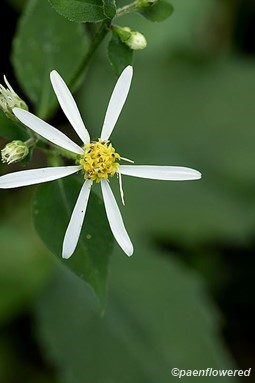
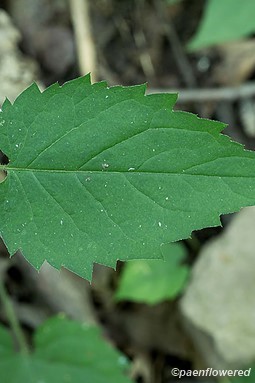
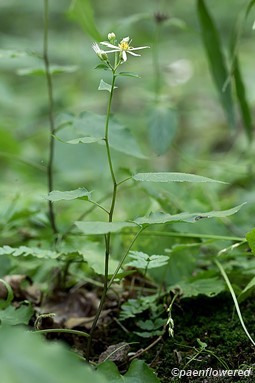
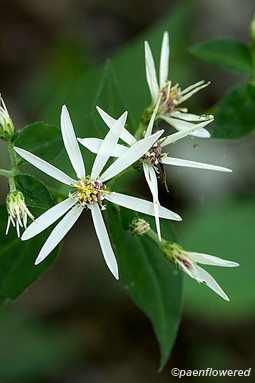
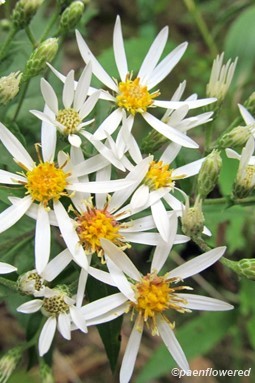
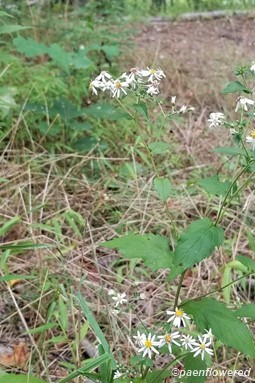
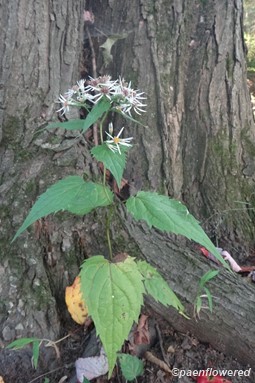

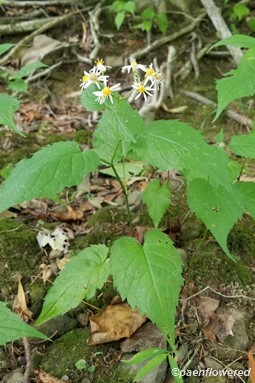
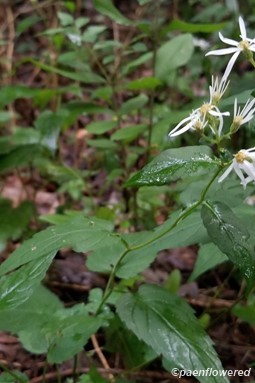

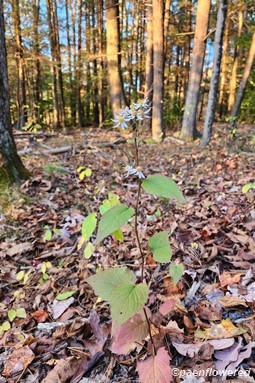
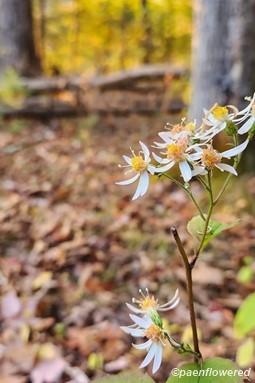


Comments
Have you spotted this plant in your area? We'd love to hear about your experience! Share your comments or questions about the plant below. Comments are moderated before posting.